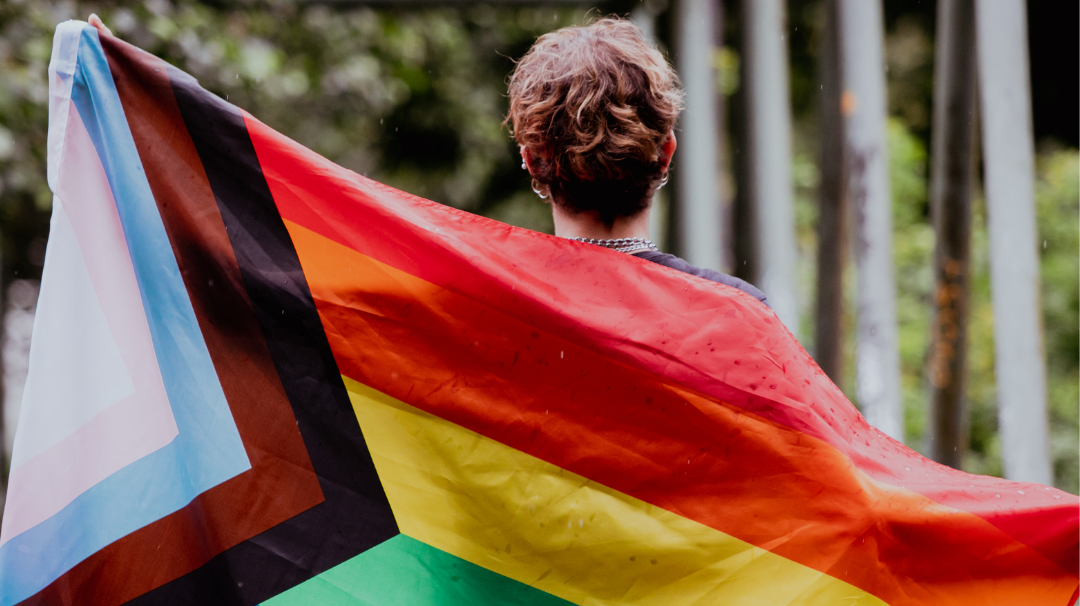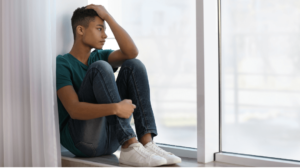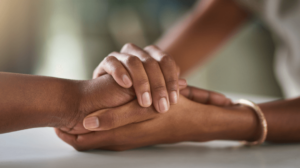In this article, we explore the importance of mental health in the LGBTQ2S+ community, significant current issues, and tips for promoting mental health and well-being in the community.

LGBTQ2S+ People Face a Higher Risk of Depression
While there is room for improvement in studies that capture the full scale and diversity of the community, more attention has been paid to mental health in the LGBTQ2S+ community. For clarity, this article uses the inclusive acronym LGBTQ2S+ which stands for “Lesbian, Gay, Bisexual, Trans, Queer, Two-Spirit, + others.
An Ontario-based survey revealed that 77% of trans respondents had seriously considered suicide, and almost half (45%) of those surveyed had attempted it. According to research, LGBTQ2S+ people are more likely to experience depression and anxiety disorders. LGBTQ2S+ youth are 3.5 times more likely to carry out suicide than their heterosexual peers due to social stressors, including stigma, prejudice, discrimination, and internalized shame.

Factors that Affect the Mental Health of the LGBTQ2S+ Community
According to CMHA, three major factors impact our mental health and well-being – social inclusion, freedom from discrimination and violence, and access to economic resources (CMHA, 2008).
Members of the LGBTQ2S+ community face challenges in each of these aspects. While every individual’s circumstance is unique, studies have shown that bisexual and trans people may often be a part of low-income households. Frequently, trans people report high levels of violence, harassment, and discrimination. They are often subjected to verbal threats, harassment, and even physical and sexual assault.
As all of these studies show, the LGBTQ2S+ community, especially youth, faces problems of self-acceptance, rejection and isolation from others. That is why it is so important for schools, families, professionals, and law and social services to be reflective of their needs because even today, LGBTQ2S+ people are stigmatized and discriminated against.
For us, as humans, it is crucial to live as we identify and be loved as we are. Studies on sexuality and gender showcase that being accepted make us feel as a whole, which, in turn, reduces stress and increases self-esteem.

What is Intersectionality and Why Does It Matter?
In addition to homophobia and transphobia, LGBTQ2S+ people are often subject to additional factors that harm their well-being, including sexism, racism, poverty, and stigma. When discussing mental health in the LGBTQ2S+ community, intersectionality is a useful framework.
Intersectionality considers the individual’s unique identity as a whole rather than a single component. Intersectionality is a framework for exploring identity through a variety of lenses such as race, class, gender and sexuality and considers how these different layers create advantages or disadvantages. By looking at the LGBTQ2S+ experience through an intersectional lens, we can better understand how an individual’s unique identity contributes to their overall experience and how best to support them.

Tips for Promoting Mental Health and Well-Being in the LGBTQ2S+ Community
There are many ways the mental health and well-being of LGBTQ2S+ people can be improved. Some require action from individuals and some from organizations. Every single one of us can play a role in making the world a friendlier and more welcoming place.
Since our society strongly enforces codes of behaviour towards sexual orientation or gender identity, coming out can be a challenge. However, experiencing positive responses during the process can have a significant impact on a person’s well-being. The support of family and friends is crucial, especially for younger members of the LGBTQ2S+ community.
Having a welcoming neighbourhood and a supportive work (or school) environment is important too. Mental health is affected by many social determinants, which is why it is crucial to address them.
As an individual, don’t be afraid to stand up for your LGBTQ2S+ friends and family! If somebody is making homophobic jokes or acting hurtfully, explain that this behaviour is not acceptable. Spend time with your LGBTQ2S+ friends and encourage them to hang out with non-LGBTQ2S+ people in your life. Make sure they feel comfortable.
Another excellent way to help is to participate in LGBTQ2S+ supporting events. Pride parades are the most popular. However, there are many other options to showcase your support.
In general, be mindful of the challenges the LGBTQ2S+ community faces. Don’t be afraid to have conversations about them! Avoid making assumptions about people’s sexual orientation or gender identity. Instead, be a good listener!

How can Healthcare Providers Help?
It may be difficult for healthcare providers who don’t identify as LGBTQ2S+ to understand and address the complex issues specific to the community. We have gathered tips that can help in the communication process:
- Learn about internalized discrimination and examine how it may be impacting the care you offer.
- Encourage your patients to connect with LGBTQ2S+ communities and seek support within the group whenever you have the chance. It is imperative to promote family acceptance of LGBTQ2S+ youth.
- If you, your employees or colleagues offer suicide response and crisis intervention, make sure they have the specific training to provide appropriate support.
- Understand that individuals in the LGBTQ2S+ community may face different challenges in their journey toward good mental health. Research the social factors that impact mental health and create an appropriate action plan.

Resources
Even today, the LGBTQ2S+ community still faces ongoing challenges and hardships on a daily basis. Speaking up about their experiences and considering ways we can be better advocates will help drive the importance of equality, regardless of one’s sexual orientation or identity.
Be a role model for kindness and inclusion, and don’t be afraid to ask questions! If you wish to learn more about mental health issues and ways to help, see other articles on our blog. Click here to find out how Eli’s Place plans to offer support to those affected by depression and other serious mental health challenges.
If you are a part of the LGBTQ2S+ community and are seeking assistance, here is a list of valuable resources that provide inclusive support in Ontario.
Youths can also contact a crisis phone line, such as:
- Kids Help Phone (1-800-668-6868) for youth aged 20 and under. Kids and adolescents can call 24 hours per day, 7 days per week.
- Trans Lifeline (1-877-330-6366). Their schedule is available at http://hotline.translifeline.org.
- The LGBT Youth Line (1-888-687-9688), is a toll-free Ontario-wide peer-support phone line for lesbian, gay, bisexual, transgender, transsexual, two-spirited, queer and questioning young people. Service is available Sunday to Friday, 4:00 pm to 9:30 pm.
Rainbow Services (LGBTQ2S) – CAMH
Eli’s Place will be a rural, residential treatment program for young adults with serious mental illness. To learn more about our mission and our proven-effective model click here.




